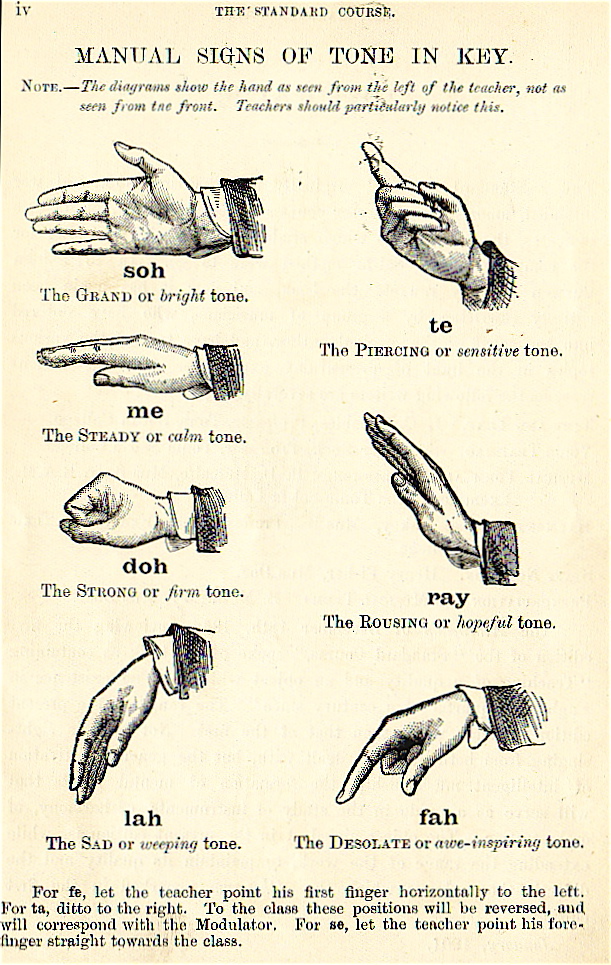
2020-08-24
On solfège
If you have seen the movie "Sound of Music", you surely remember the scene when Julie Andrews teaches her wards the rudiments of music by singing the song "Do, a deer". It's a cute lyric -- Oscar Hammerstein II -- designed to provide mnemonics for the solfège names assigned to the seven notes of the major diatonic scale: ut, re, mi, fa, so, la, si. The origins of these labels go way back in European music history to the 1300s; scholars believe they are the initial syllables of Latin words sung on these pitches in a Gregorian chant, "Ut queant laxis re sonare etc." selected by Guido d'Arezzo to establish his hexachord system of organizing pitches. (Guido is also rumored to have created the staff by pointing to his extended fingers to indicate which pitches he wanted sung. A dear friend from college had a T-shirt I coveted with a fine, florid, pseudo-medieval image of Guido's foot. But I digress.) In subsequent centuries, "Ut" changed to "Do" and "Si" changed to "Ti". And here we are!
Now, for various reasons, I don't remember much about first grade; but I do remember Sister Mary Patrick and her introduction to music. God bless her... she took the 30 odd kids she had in our class at Our Lady Comforter of the Afflicted parochial school, and every other day or so she would teach us these very same syllables as an introduction to singing. She didn't have Julie Andrews' voice or figure, but I <loved> learning solfège. I was just starting to play the stuffing out of the old piano at our house, and this "inside" music knowledge struck me as very cool indeed. It didn't hurt that Sr. Mary Patrick had a large jar of sour apple candies in the corner of the classroom, a jar which she used to bribe us into reasonably controlled behavior. I seem to remember being one of her favorites (she was Irish) and eating quite a few sour apple candies.
Sr. Mary Patrick taught moveable "Do" solfège. moveable "Do" means that the first note of the key in which you are singing is "Do". If the key changes, so does the placement of "Do". I later learned that the entire Kodaly method of solfège, extensively used in North American and European primary schools, is also moveable "Do". From an early age, I was "imprinted" with the association of these labels with the notes of a major scale. Very useful in sight-singing and "hearing" music inside your head.
Fast forward to sixth grade, when I turned up, one ocean and one language away, on the doorstep of my Belgian piano teacher. She was wonderful -- dismantled my entire unhealthy piano technique and rebuilt it into something that serves me to this day. She was a Brussels Conservatory grad, and like all Continental musicians, she used solfège to vocalise notes too. BUT... her "Do" never moved! On the Continent, the solfège names behave like the letter names do in our British/North American practice. They don't change, regardless of which keys you assemble them into. This practice is called "Fixed do solfège", and my poor teacher was absolutely astonished that I could not deal with nailing "Do" to the floor. You could hear the brain short circuits as I struggled to name the correct fixed-do names as we sight sang a Bach invention. Finally... and she almost never did this with me... she gave up. "Sing whatever label works for you... I just want you to sing this!" (Except, of course, she said it en français.)
So, with the passing of the decades, I have had many opportunities to watch music students wrestle with solfège as they suffered through sight-singing, theory and conducting classes. It is, however you acquire it, an enormously useful skill. We have had a huge amount of fun in the church where I am music director forming an a cappella group and singing unaccompanied for an hour at a time. Solfège, and its ability to train that musical space in the inner ear, is a huge leg up in a cappella. I only wish I had a large jar of sour apple candies and the ability to repay Sr. Mary Patrick for her gift!
If you have more questions about this topic, don't hesitate to contact me and we can chat.
K
Previous blog entries